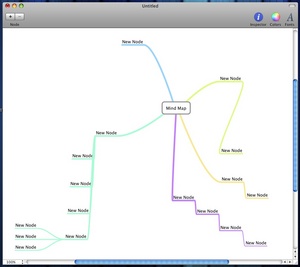Information technology jobs appear to be somewhat resilient. Although American companies are outsourcing and offshoring technology jobs, several information technology occupations are expected to see significant job growth over the next decade. In the case of network and systems administrators, that growth may be faster than the average growth for all occupations according to the Bureau of Labor and Statistics. After reviewing all the paths that interest me in the IT field and studying the report by the Department of Labor I have settled on network administrator as my professional goal when I graduate. As a network administrator I will be required to possess a broad background of knowledge concerning computer hardware and software and how they mesh in a network. I will also be responsible for the security of the data found within that particular network. Due to the present growth and evolution of technology in my chosen field, I will have to stay current and utilize the most up-to-date tools available. The network administrator is not just an IT guy, but a jack of all networking trades.
In the networking field there are three types of hardware that an administrator will have to become familiar with: routers, LAN (Local Area Network) switches, and proxy servers. Routers come in all sizes; from the small broadband routers used in the home to the large core routers used by ISPs (Internet Service Providers). Routers are used to connect multiple networks. A perfect analogy would be UPS (United Parcel Service). Where UPS moves packages, routers move packets of data. Routers will receive information and using algorithms, determine the most efficient route to send that information across two or more networks towards its destination. When used in a LAN, routers can also offer some security when connected to the Internet by working in much the same way a firewall works. Routers are a vital part of any network and maintaining them is an important aspect of a network administrator’s job.
Where routers connect multiple networks, LAN switches connect multiple computers. LAN switches are comparable to traffic lights. They direct the traffic of information within a LAN and do it as efficiently as possible. Prior to switches, LANs used what are known as hubs. Hubs would receive data meant for a particular computer within a network and repeat the signal to every computer on the network. The signal would be ignored by all the other computers except for the one the signal was meant for. It is easy to see how inefficient this would be. Switches are able to receive the data from one computer, analyze the address it is meant for, store the address information for future use, and send it only to that computer. This prevents congestion on a network and in doing so makes the network more proficient.
If routers are the United Parcel Service and switches are traffic lights, then proxy servers are the liaisons of the network. When a client or user requests a web page, the proxy server interprets the request and forwards the request to the Internet. When the server receives a response it forwards the response, in this case a web page, back to the client or user. This action provides some security because the server is the go-between, preventing the Internet from coming into direct contact with the network. Proxy servers can also be configured to block access to certain sites, which can provide additional integrity for the network. Proxy servers are capable of reducing response time by storing or caching web pages, thereby increasing the speed of a network. When used together; routers, LAN switches, and proxy servers provide a network infrastructure that is vital to the success of a company, success that is predicated on the abilities of the network administrator to maintain and manage that infrastructure.
Familiarity with the hardware of a network is certainly essential, but understanding the software that runs the hardware in a network is imperative. A network administrator will direct most of his focus on system software when working with a router or a switch. By accessing the OS (Operating System) software for a router or switch (known as the IOS or IOS XR in Cisco routers and switches and JUNOS in Juniper routers and switches); a network administrator can configure the hardware to modify interface settings, routing protocol settings, line settings, and filtering settings for security purposes. Utilizing the OS of a router or switch can maximize the security of the network by controlling access to the network, filtering inbound traffic, and configuring a set of firewall functions.
System software is not the only software that a network administrator must be proficient at using. There are several different types of application software available to network administrators that help make their jobs easier. Network monitoring software and ELM (Event Log Management) software are two examples. Network monitoring software is used to supervise the condition of the network. If anything out of the ordinary occurs, such as connection failures, the monitoring software can alert the network administrator of the problem. Once the problem is diagnosed by the software the network administrator can take the appropriate steps to fix the problem. This type of software enables the administrator to oversee the network effectively.
Another type of application software used by administrators is ELM. Event Log Management software is used to log or audit changes in the infrastructure occurring within a network. For security purposes this software is capable of recording failed login attempts and can create email backups. When used in specific industries, health care for example, ELM software can create compliance logs so that a particular company can prove it is compliant based on different federal regulations. This software is crucial for the network administrator because it is capable of collecting, analyzing, reporting, and saving event logs produced by routers, switches, servers, and workstations. Reports generated by this software are used by network administrators to analyze system problems and performance.
Understanding the ins and out of hardware and software is not enough. A network administrator must utilize all of the tools at his disposal. One of the best tools he can use is the Internet. Staying current can keep an administrator one step ahead. There are several web sites available through the Internet that cater to the network administrator and all that his job entails. Staying current is not just about the up to the minute news that relates to the administrator, but also the use of patches to stay current. The Internet provides access to software and hardware companies that provide patches to their products that can be downloaded. These patches are used to fix security issues, update drivers, and provide additional tools that the network administrator uses to maintain the health and performance of the key parts of his network.
A major concern of network administrators is the security of the network. A study by the IDC, a provider of market intelligence for IT, forecasts that by the year 2011 more than 70 percent of the global workforce will connect to their networks by using mobile devices. The advent of the mobile workforce means that more and more workers will be using their mobile devices outside of the relative safety of their primary networks. The network administrator’s job will be to make sure the mobile workforce is educated on the proper security procedures to use when they are connecting to unsecured networks. The use of data encryption, firewalls, anti-virus, and anti-malware will help to prevent security breaches, not only on the mobile devices used, but also on the network itself when those devices are brought back into the IT infrastructure of the business. Basically, knowledge is power, and making sure the end user is informed is a step in the right direction to ensure the security of a network.
Although mobile computing can create problems in a network environment, there are some positive aspects that should be mentioned. . The aforementioned network monitoring software includes the ability to send alerts through email or to a designated phone number. The ability to receive text messages or email on a cell phone enables a network administrator to keep tabs on his network, even when he is out of the office. Also, the creation of remote access software makes it possible for an administrator to access a computer within a network while they are away from the network, for example, if they are travelling or at home. These are just two examples of how mobile computing can have a positive effect on the network administrator’s job.
In closing, a network administrator’s job comes with a great amount of responsibility. He must be knowledgeable in all aspects of a network; including the hardware, software, and maintenance of the security infrastructure. The education of a network administrator does not stop once he acquires the job title. He must constantly learn and adapt to the ever changing landscape of his IT field. This is made easier with the increase in information and technology that is available through the Internet, World Wide Web, and mobile computing.
Sources
Bureau of Labor and Statistics, http://www.bls.gov/oco/ocos268.htm
New Study Reveals Exploding ‘Culture of Connectivity’ Forcing Enterprises to Change the Way They Do Business or Be Passed By, http://www2.nortel.com/go/news_detail.jsp?cat_id=-8055&oid;=100240534 , Nortel:News Releases




